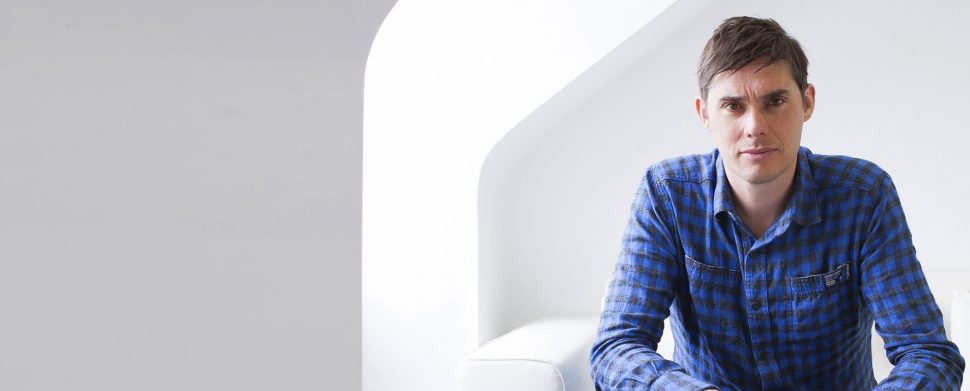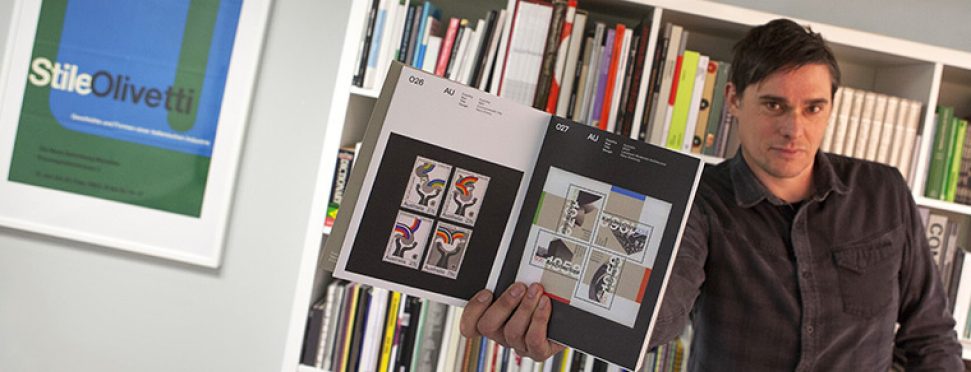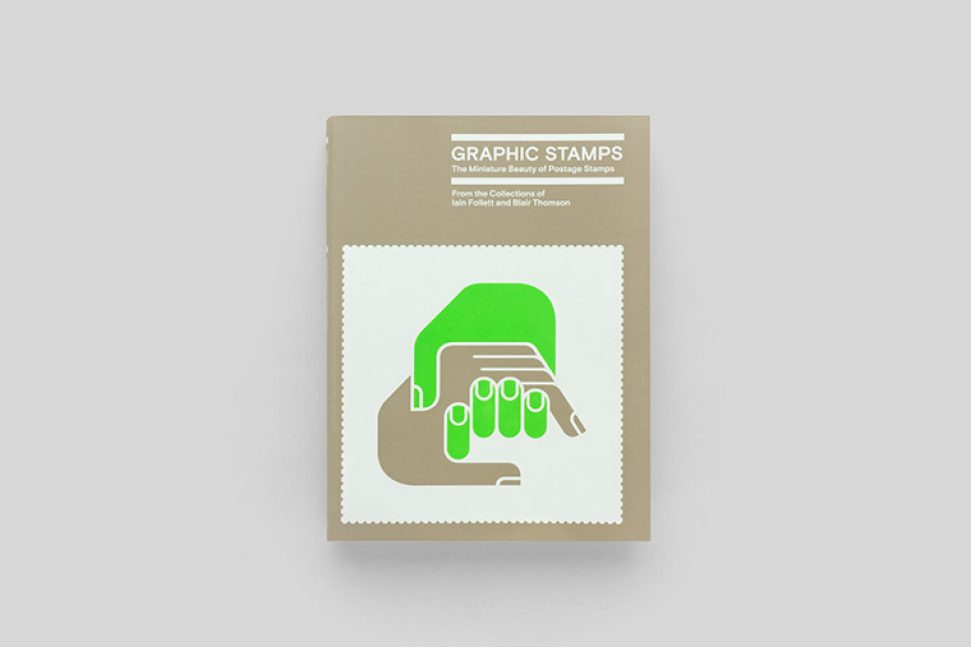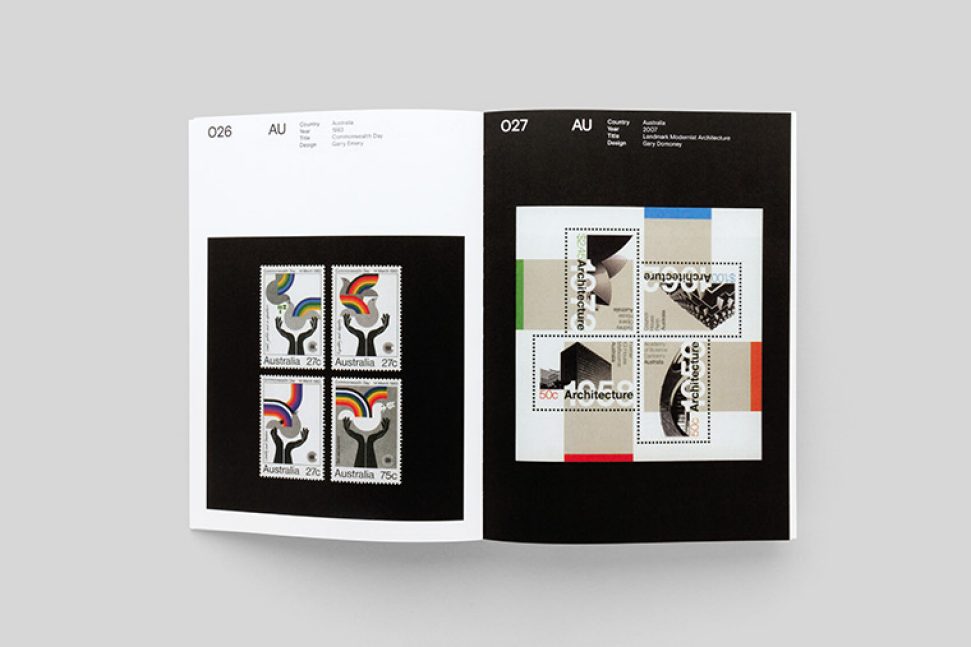Blair Thomson is a designer, author and avid philatelist, on a personal mission to change the traditional perceptions of stamp collecting from old fashioned and nerdy to contemporary and cool. His successful Instagram account Graphilately, is a wonderful pictorial celebration of his own beautifully curated collection. In this article he gives us the low down on when, where and how he developed a passion for stamps, and his view of the future of philately in the new digital age.
Blair can you give us a bit of background to how you got into stamp collecting as a hobby?
I moved to Australia from Canada in 1974. I think it was in 1978 that my dad made me up my first album to get me going. That would make me 7 or 8. He had a collection also, and was sending back stamps to my grandmother in England, for her collection, and as such had a surplus which ended up in my book.
What do you remember most about being a child stamp collector in Australia in the 70’s?
We lived south east of Melbourne in a semi-rural area on a couple of acres. Stamps provided me with a sense of escapism, each stamp representing a cultural reflection of each country and its identity. I’d sit in my bedroom during the winter months hinging new additions I had accosted from our mail, having badly steamed them off the envelopes. It was always the more graphic, and what I would later discover, reductive, modernist stamps which excited me. Strong geometry. Strong colour. Simple, beautiful composition and typography. It was at this point I was starting to form a sense of what graphic design was, albeit subconsciously.
And how did you build your collection in the early years?
During my childhood I was just taking what I was given, and topping them up with stamps which appeared in the house. I had no idea you could buy them, other than to post letters.
Do you still continue to collect now?
Yes, very much so. When I have time I will search online stores and occasionally attend stamp shows to see what the dealers have available. This fits well with my busy personal and work life. The internet has made it really easy to search and discover lots of amazing gems. I don’t think I’d be as successful a collector without it.
So how large is your stamp collection?
When I moved back to Canada in 1980 I discovered sports, and a new sense of freedom, now living in suburbia. My stamps went back into the toy box. Then ten years ago I inherited my grandmother’s collection which resurrected my interest. I started collecting ‘Mint-never-hinged’ examples from the ground up. Today I have two core albums, soon to be three, which accounts for thousands of stamps although I must confess to never counting them. I also have all my old original albums and loose stamps, as well as everything I’ve inherited over the years.
What is it that you love about stamp collecting?
Stamps have always been a personal journey. Fuelled solely on my obsession with design of a particular aesthetic — within a world (philately) where typically this is not the collector’s primary motivations. I’m definitely unorthodox from a traditional philatelist’s perspective. Sharing the beauty of these, often forgotten stamps and uncovering the designer behind them has become almost as important as owning them.
Given your time spent in Australia, do you have many Australian stamps in your collection?
My main graphic stamp collection has around a hundred Australian specimens. Mainly from the 60’s, 70’s and 80’s — but some more contemporary examples too. One of my grandmother’s albums I inherited is also Australian. This is a very large collection of mint hinged and used stamps from the turn of the 20th century through to the early 1970’s. These are more sentimental to me than anything else.
During the late 60’s, 70’s and early 80’s Australia really embraced the International Style of Modernism in its cultural design. This is a significant marker in my obsession with this era and philosophy. Stamps were no exception. I have a particular fondness for Australian design hero Brian Sadgrove’s set for the Munich 1972 Olympics, as well as Gary Emery’s design for the ANZCER joint issue with New Zealand from 1983 and his Commonwealth Day set from the same year.
Do you have any particular philatelic heroes?
As a proud Canadian I have a soft spot for Gottschalk + Ash (Fritz Gottschalk + Stuart Ash) whom both produced many amazing stamps for Canada Post. Australian designers I admire are Brian Sadgrove, Gary Emery (both mentioned earlier) and Hungarian / Australian George Hamori who did some great work, including many for the United Nations. There are so many. I get a kick out of discovering lesser known designers, and often as a result, an entire body of work I have never seen.
What spurred you to create Graphilately?
Creative side projects, writing, speaking engagements, getting involved in various communities — putting yourself out there and trying different things, it’s how we learn about ourselves and develop as people. I look for ways to connect with people who share my passions, something I always support with the rest of my team in the studio.
I started posting the occasional stamp on my personal Instagram feed several years ago, and the reaction I received was overwhelmingly positive. At the same time I wanted to raise the profile of ‘graphic philately’ and reach a much larger audience. I decided that an account delivering consistent and regular content on a singular subject could attract a much larger audience. It was just an experiment, to see if there was any interest. It’s gone on to make quite a success of itself, with a supportive audience as broad as you could imagine. Ultimately what I set out to achieve.
Are all stamps featured your own?
Yes all the stamps are all my own, from my personal collection. I do not feature guest posts or content borrowed from elsewhere on the internet. It’s basically a digital stamp album which continues to expand and evolve, Fridays, Saturdays and Sundays every week. Some are old favourites, some I will have just acquired. I keep the curation deliberately varied.
As a designer you clearly have appreciation for stamps and ‘miniature art’. Have you designed any stamps yourself?
I’ve never had the opportunity to design any stamps professionally. This would be a dream commission for me, and is something I would be really keen to pursue in the future. I would love to have at least one stamp to my name.
What might your design feature?
I don’t think I have any pre-conceived ideas of what I would design. I’d love to design something for a cultural or national event, or another celebratory theme I guess. Something with impact to its consumers stands the best chance of emotionally connecting for the long term.
What advice would you give collectors starting out in a new digital age?
If anyone is looking to buy stamps, online is obviously a good place to start in terms of access to lots of stock. But it’s still hard work, looking for the gems. Even better, if you can get to a regional stamp fair you’ll find the rewards more plentiful. Nothing beats seeing a specimen in your own hands. If you can access a world catalogue like Stanley Gibbons or Scott’s in somewhere like the library you can have a look through it and see what appeals, so you have something to look for.
Finally, what future do you think there is for stamp collecting and how do you think the hobby might change over the next decade?
Philately as a pastime has been in rapid decline for such a long time, which is part of the draw for me personally. I’d love to help shift this perception, and in the process increase the desirability of stamps, and stamp design, to the wider more design-conscious collector.
I think, in part, I’ve definitely helped in raising the profile of stamp design and stamp collecting again. At least a few small steps. The impetus for me to use social media as a way of ‘sharing’ my collection was purely an experiment initially. As a result, I’ve enjoyed seeing friends and followers take an interest and begin to take steps to get a collection off the ground.
Perhaps the influence of our elders has been superseded by the ‘social’ influence which the world seems obsessed with these days. Either way, with the changing landscape of post as we know it I could think of no better time to see a resurgence in the appreciation of stamps and stamp design.
The Archive Series #001 Graphic Stamps. The miniature beauty of postage stamps
The Archive Series is a bibliographic celebration of graphic design archives and collections. The first title in the new series is devoted to the design of postage stamps. Sourced from the collections of stamp design experts Iain Follett and Blair Thomson, the book celebrates the brilliance of postage stamp design from around the world.
In the view of David Gentleman – one of the world’s great stamp designers – designing for a miniature format forces artists and designers to be ‘extremely selective and to be ruthless in cutting out the essentials.’
The work in this book is a powerful exemplar of Gentleman’s theory: intensity and clarity are exhibited on every page. The stamps in this book all come from the lovingly assembled collections of two passionate stamp collectors and graphic designers – Iain Follett and Blair Thomson. Both are evangelical in their enthusiasm.
Philately is not just for nerdy schoolboys. Iain Follett commented: “Collecting stamps for their graphic design qualities is the main reason I started to collect. It didn’t come from a desire to find out more about postal history. It was to find the best in stamp design and to promote the designers behind them to the wider design audience.”
Follett and Thomson have researched deeply into the design history of stamps, and they have unearthed the names of many little-known designers engaged in high-quality stamp design. Thomson is optimistic about the way stamp design is being revisited: “I do feel that there is a growing resurgence of interest bought about in some part by Iain Follett and myself, and a few fellow collectors who have seen the value in the incredible designs available, and have used the advent of social media to showcase them to a global audience.”




